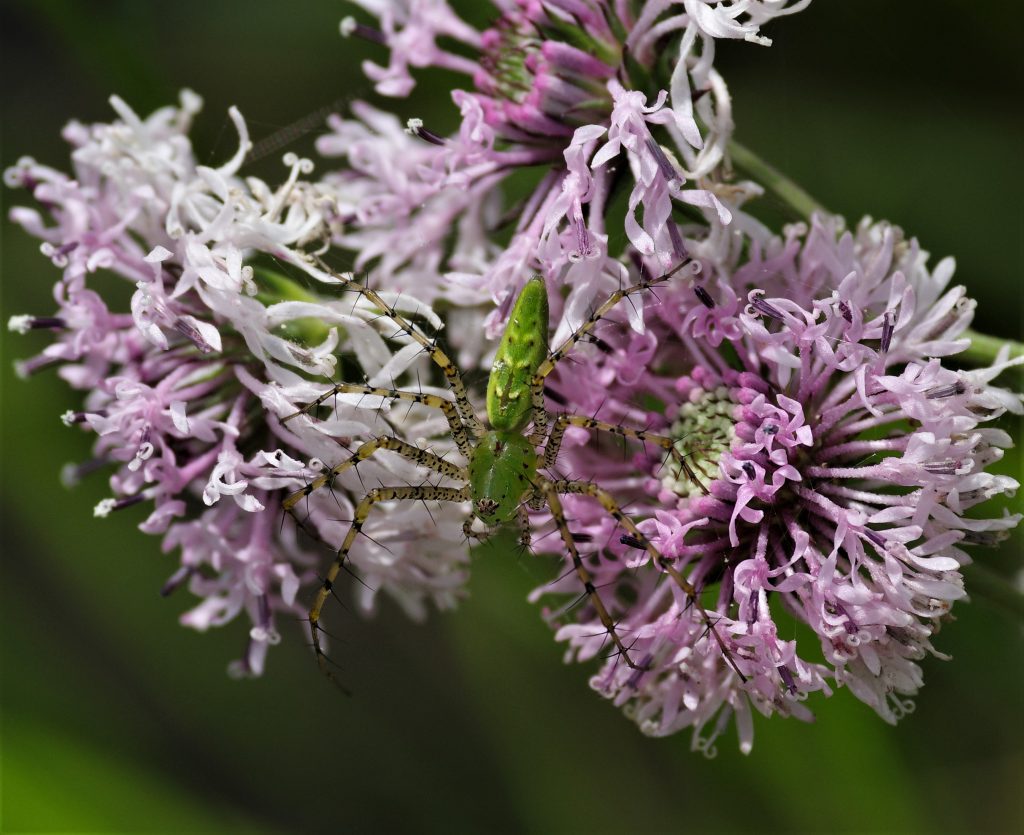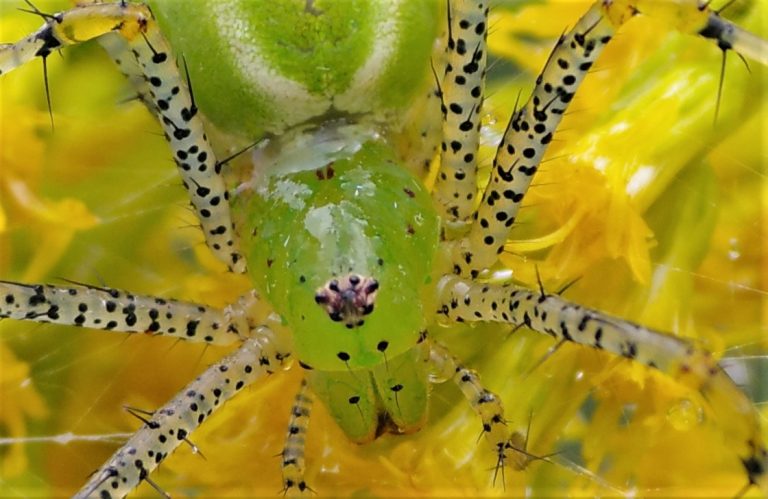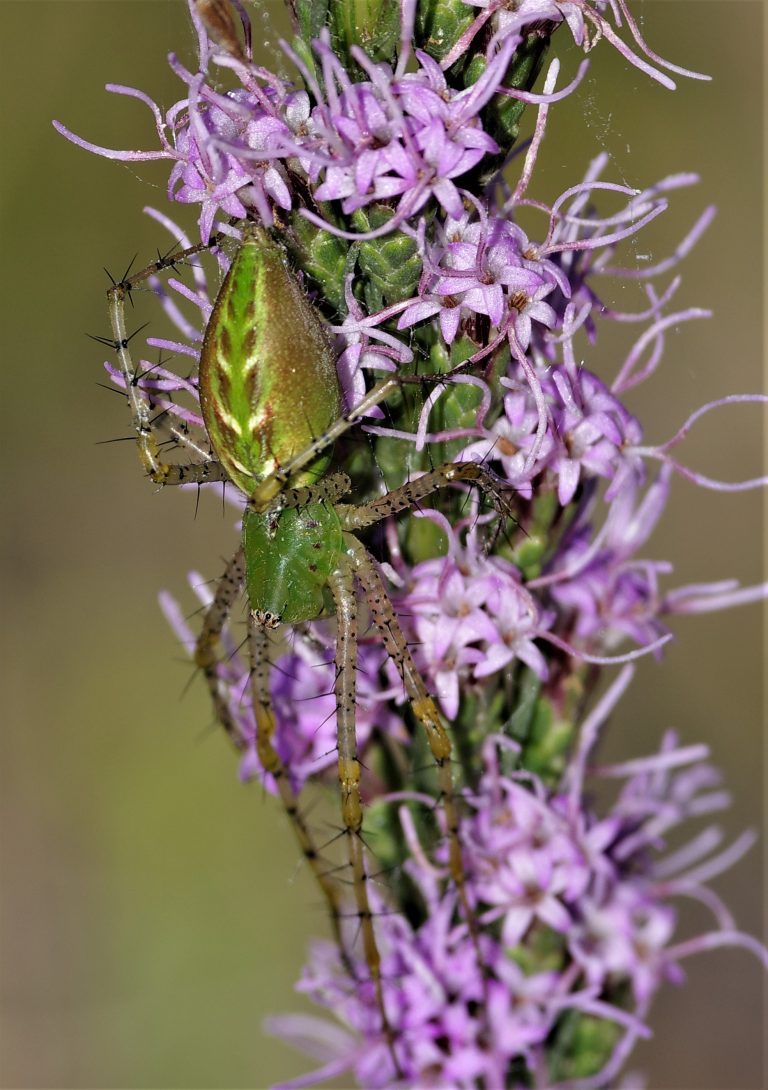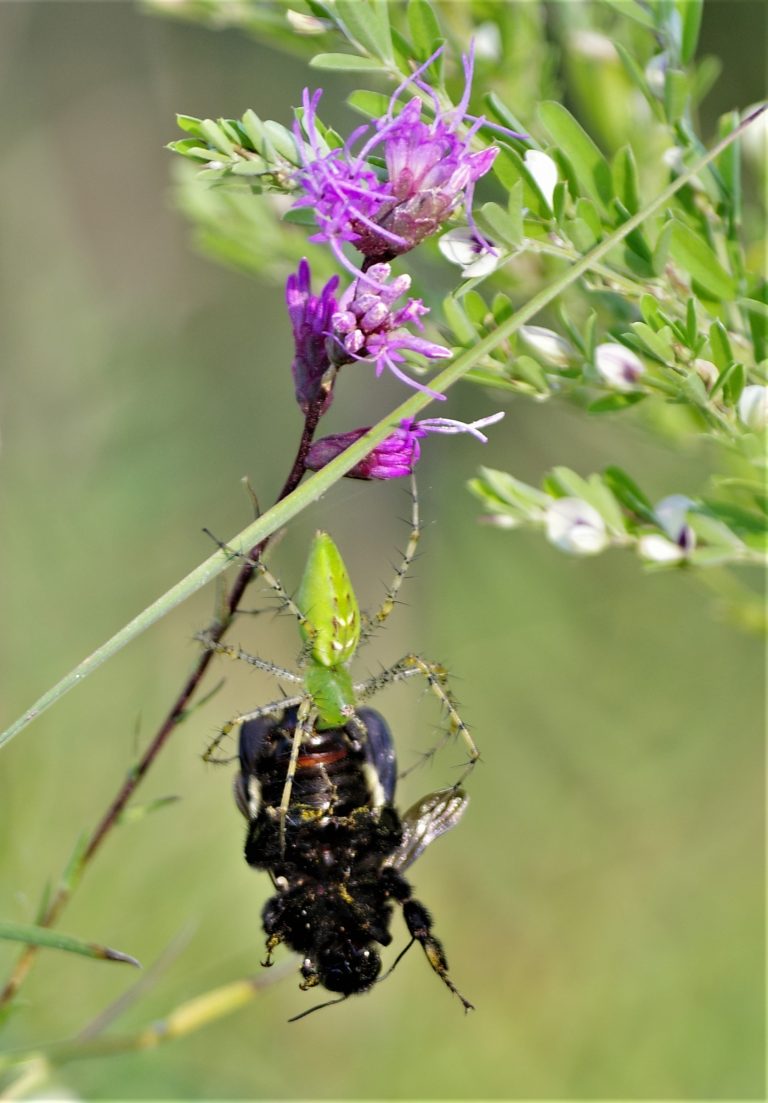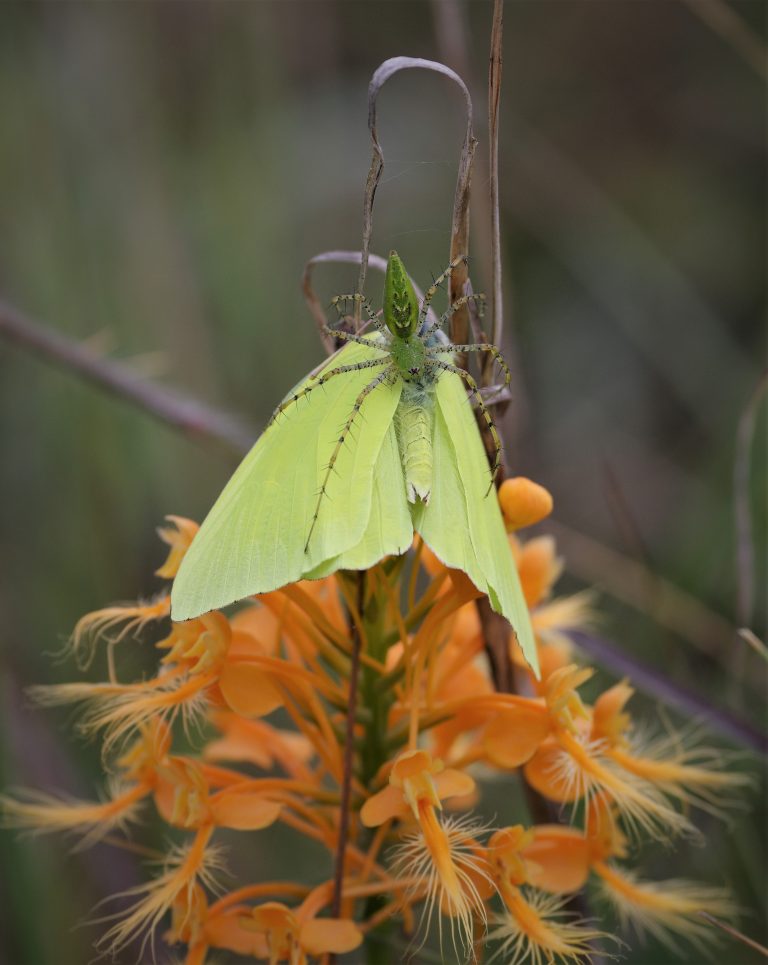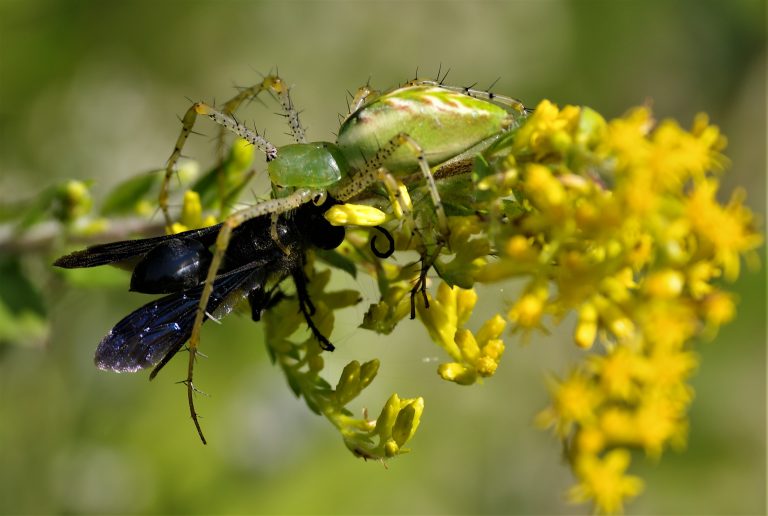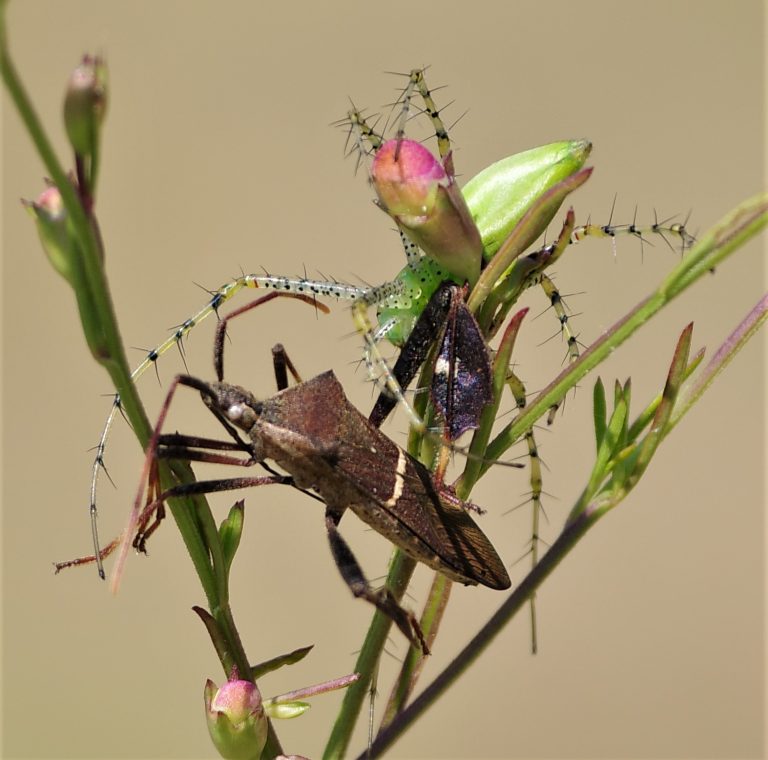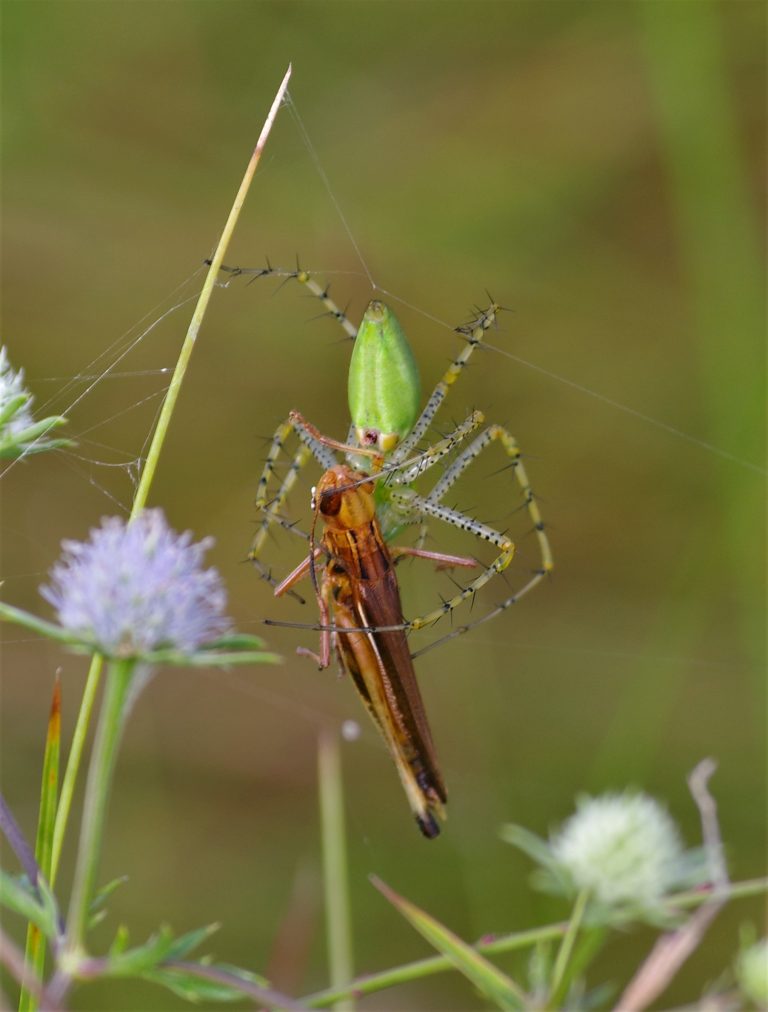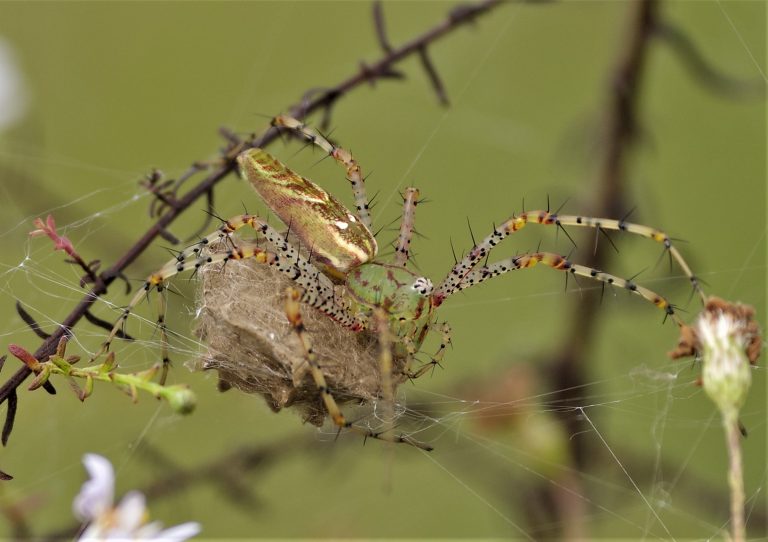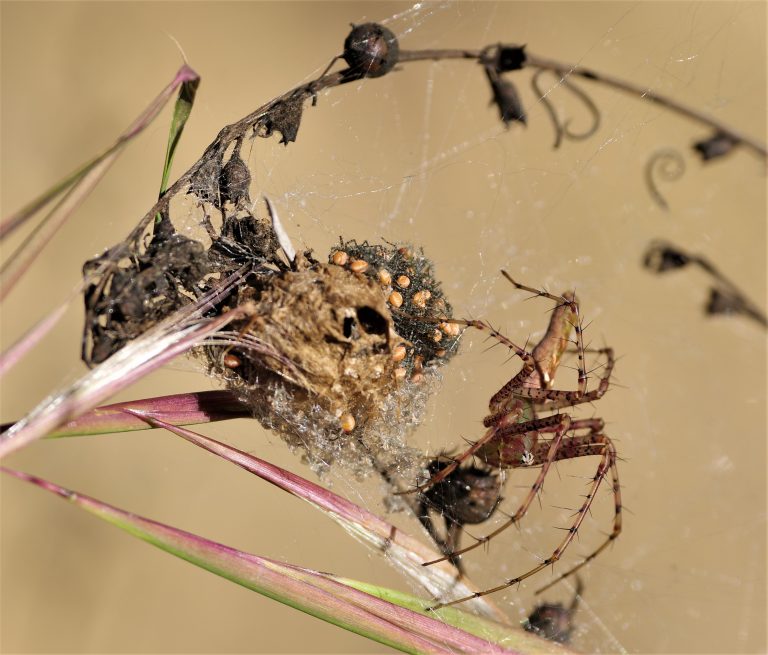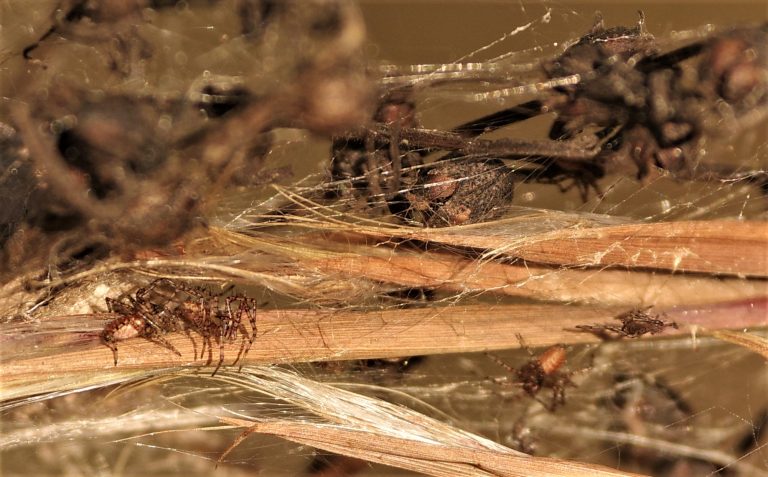I moved from Oregon to Wilmington when I retired, four years ago. Because I fancy myself a “Master Naturalist” I quickly began working to develop familiarity with this region’s biota and a basic understanding of its ecology. In the process, I encountered many plants and animals new to me. This essay highlights a local resident that I find fascinating—the Green Lynx Spider—a paragon of hunting prowess, and of parental care.
Green Lynx Spiders are large spiders with elongate translucent green bodies variably marked with reddish, whitish, or tan spots and lines, and long legs adorned with scattered black spines. They range across the southern United States from Virginia to California, and south into Mexico. They are fairly common in the Wilmington area, particularly in Longleaf Pine woodlands, where they frequent the understory wildflowers.
A quick introduction to spider anatomy: spiders have two body segments, a cephalothorax and an abdomen. Think of the cephalothorax as the front two sections of an insect—head and thorax, fused together, making them totally neckless. They have two down-pointed fangs guarding the mouth, and usually eight (!) eyes variously arranged on the front of the cephalothorax. They have eight legs, all attached to the underside of the cephalothorax. The abdomen contains most of the digestive system, the reproductive organs and the silk-producing spinnerets.
Female Green Lynx Spiders grow to a body length of about one inch, and may span nearly three inches across their legs. Males are a bit smaller. They have somewhat pear-shaped cephalothoraxes. Abdomens are usually narrow and elongate, but in females, swell to the shape of a football before laying eggs.

